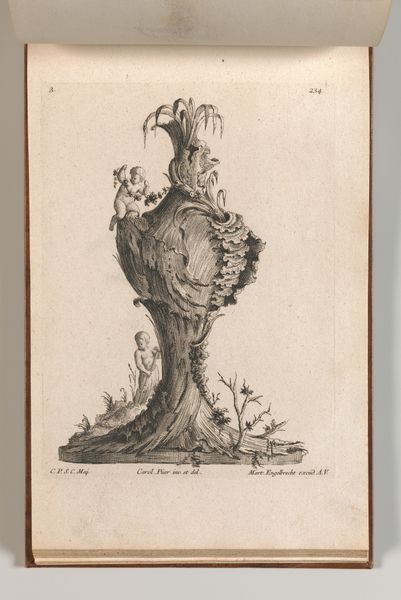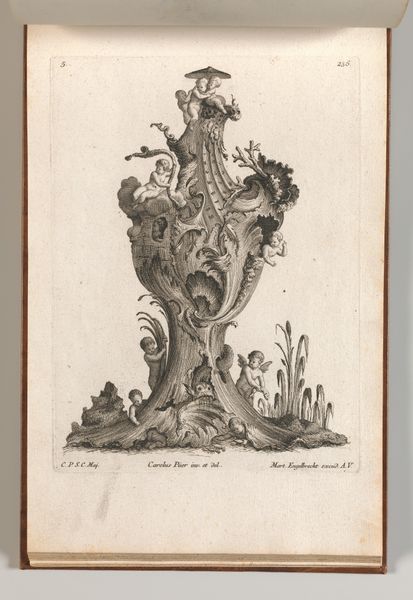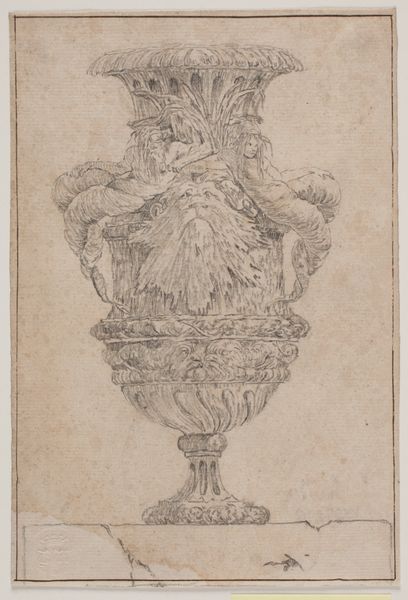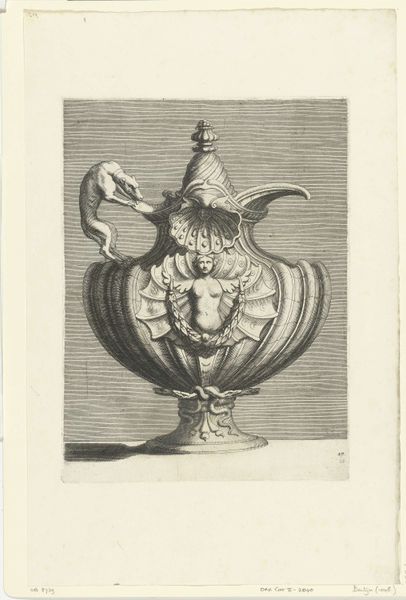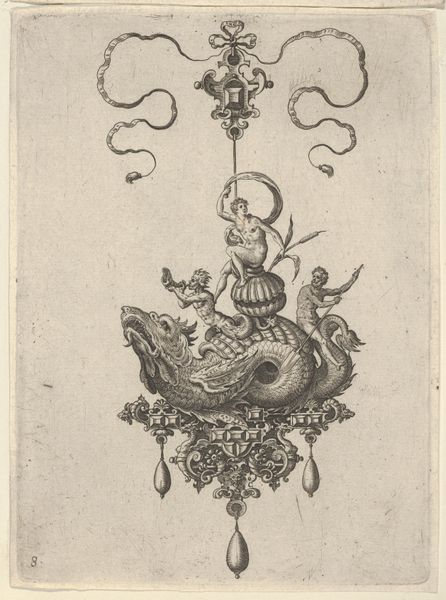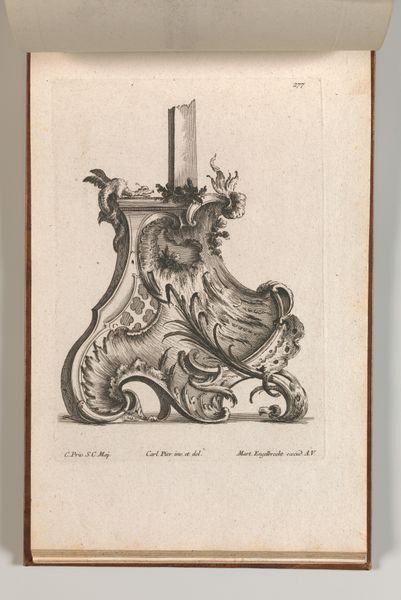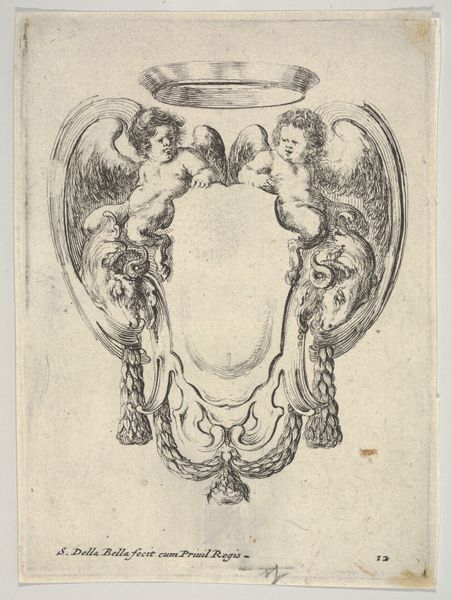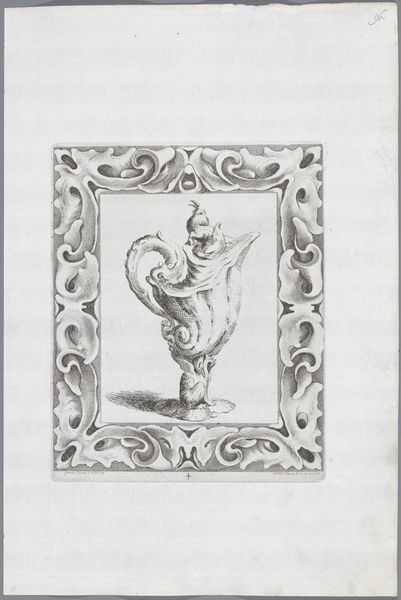
Design for a large Asymmetrical Vase, Plate 4 from: 'Neu inventierte Vasi auf die neueste manier' 1745 - 1755
0:00
0:00
drawing, print, engraving
#
drawing
#
baroque
# print
#
vase
#
decorative-art
#
engraving
Dimensions: Overall: 8 7/16 × 13 3/4 in. (21.5 × 35 cm)
Copyright: Public Domain
Curator: Well, isn't this something? At the Metropolitan Museum of Art, we have a drawing, technically a print, from a series titled "Neu inventierte Vasi auf die neueste manier," which translates to "Newly invented vases in the latest manner". This particular one, Plate 4, is called "Design for a large Asymmetrical Vase," dating from about 1745 to 1755. Jacob Gottlieb Thelot is credited for the design. Editor: Wow, asymmetrical is an understatement! It’s almost aggressively ornamental. Like a Baroque squid got turned into a really fancy flowerpot. It's undeniably intriguing. What are we looking at in terms of technique? Curator: This Baroque beauty is rendered through engraving. See the tightly packed lines, especially around the base and the fluted edges? That's how the engraver conveyed texture and three-dimensionality. These designs were part of a larger trend. Thelot was very much reflecting his era’s fascination with elaborate design meant to inspire craftsmen. It's all about the flourish! Editor: The amount of detail packed in is intense; it almost feels excessive, like it’s fighting against the simplicity of the line work, you know? But then, thinking about those artisans seeing this…were they meant to copy it exactly, or just kind of…get the idea? Curator: A little of both, I think. The pattern books of the time spread like wildfire, these were tools for disseminating styles and motifs, giving craftsmen access to cutting-edge trends even if they couldn’t travel to the major artistic centers. It was about adaptability—taking these intricate designs and interpreting them for different materials and contexts. Remember, these images have meaning: symbols of wealth, sophistication and elevated taste, made possible thanks to this style moving across the continent. Editor: That’s a very powerful thought - style democratization by way of reproducible design! So what do we take away, now, having looked closer? I think I now appreciate this vase much more as a tool as well as objet d’art. Curator: Precisely. It highlights the interconnectedness of art, craft, and commerce in the 18th century. It’s more than just a vase; it's a window into a world of expanding artistic horizons.
Comments
No comments
Be the first to comment and join the conversation on the ultimate creative platform.
